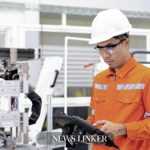In a defining move to strengthen the safety of artificial intelligence (AI), the United States and the United Kingdom have sealed a pact to collaborate on the development of stringent testing protocols. This alliance is poised to play a critical role in the reliable and secure deployment of advanced AI systems. By combining forces, the two nations aspire to build a unified scientific approach, share insights, and set a global benchmark for AI safety.
The discussion around AI safety has been brewing for years, with both the UK and US previously expressing their dedication to managing the risks associated with these powerful technologies. This new agreement is not their first venture into cooperative tech endeavors; it follows in the footsteps of historical collaborations such as the one between GCHQ and the National Security Agency. Both nations have continually recognized the transformative impact of AI on society and have worked separately and jointly to mitigate its potential hazards.
Significant Endeavor for AI Safety
The UK’s recently established AI Safety Institute and its US counterpart are at the forefront of this ambitious initiative. They plan to embark on joint public testing exercises, share research findings, and possibly exchange personnel in an effort to tackle AI risks more effectively. This partnership underlines a proactive stance against threats to both national security and societal wellbeing and will commence operations immediately to keep up with the rapid pace of AI advancements.
Building a Unified Safety Framework
As part of their commitment, the UK and US will not only conduct joint testing but also facilitate the exchange of crucial information on AI model capabilities and inherent risks. The objective is to construct a foundational scientific framework for AI safety testing that international researchers can adopt. This aim is to instill a level of trust and safety within the realm of AI that stretches across various sectors, thus encouraging responsible development and deployment.
Emphasis on Cooperation Over Regulation
While the focus of the agreement is on the risk aspect of AI, UK’s stance remains against broad regulatory measures in the short term. This contrasts with the more stringent outlook of the US under President Joe Biden and the European Union’s AI Act. The alliance has been met with positive reception from industry experts who see it as critical for cultivating trust and ensuring the safe evolution of AI technology.
In the broader context of AI development, recent articles from other sources have shed light on the potential risks and benefits of AI in the workforce and society in general. For instance, one article titled “Robotic Process Automation: The Next Step in the AI Revolution” from the website TechForge discusses how automation could reshape existing jobs. Another, “AI and Ethics: Navigating the Challenges” from the site Dataconomy, examines the ethical considerations necessary in AI deployment. These discussions complement the narrative of the UK-US agreement by highlighting the importance of safety and ethics in AI’s trajectory.
Useful Information for the Reader
- Joint AI safety tests to benchmark global standards
- Exchange of AI safety research and personnel between nations
- Development of a unified scientific foundation for AI safety
The signing of this bilateral agreement heralds a significant step in aligning global AI safety standards. The UK and US are placing themselves as vanguards of responsible AI development, prioritizing the importance of robust testing frameworks and information sharing. The partnership’s immediate implementation ensures that safety protocols will evolve alongside AI’s rapid advancements. This transatlantic effort is set to foster a new era of AI safety, providing valuable insights and methods that will resonate across the international community.










